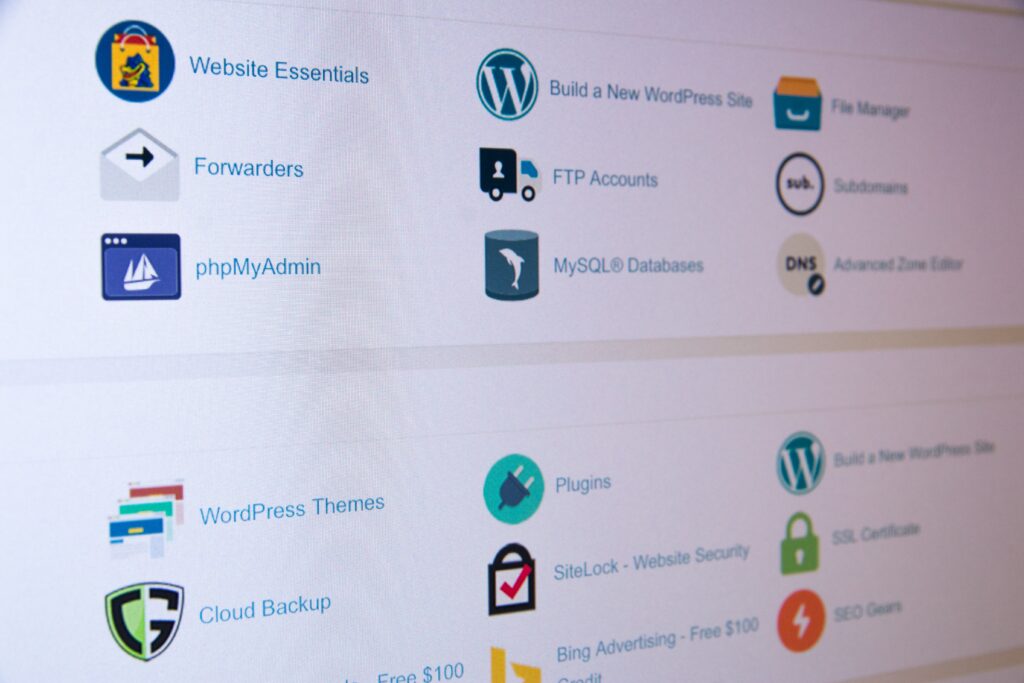Blogging Best Practice.
Iv been trying to think of a topic for my next blog post for a few days now. Then a late night flash of inspiration hit me. What are the best practices when it comes to writing a blog? What are the key elements you should try and incorporate and are there any guides from really successful Bloggers?
So I decided, instead of stabbing about in the dark, I should do my research and spread some light on the situation and maybe it will help us all.
Background Information.
There is a lot of information and many opinions when it comes to Blogging Best Practice,- just do a Google search and you will see. I will give you the information I have found as well as links for you to do your own research.
Let’s start with some Facts and Figures, just to give us an idea of what a blog is and where our blogs are in this world of Blogging.
According to the Wikipedia post about Blogging on the 16th Feb 2011 there were 156 million blogs world wide. This means that our own blog is quite a small fish has to work very, very hard to be noticed in this big pond!
There are several types of blogs to suite every individual, its not just a corporate thing or a personal thing. Most people will find they are already blogging and didn’t know it.
Here are the main types of Blogs:
- Personal Blogs
- Microblogs (Twitter, Facebook, Tumblr, Instagram & Google + to mention just a few)
- Corporate / Organisational
- Fan / Genre
- Media / Vlog (these are the video blogs you find on YouTube or Podcasts)
- Device / moblog (this is on the go short blogs from mobile devices “On the go blogging”)
- Community / Web Forum (blogging as a large community about different but relevant subjects – Smashing Magazine is a very good example of this)
- Advertising / Fake Blogs (these are blogs that promote products and services and refer them to customers for commotions and some times hide this fact)
So What Is A Blog
A blog is a discussion, a conversation and should have a human, non-corporate voice. It should be open for comments (so get those comments enabled) and you should not fear this. A blog should be a two way conversation. It should be a way of talking, discussing, and help.
For example your company creates a product, lets say its an online service. This service has recently been updated and you have been asked to write the blog post to explain all the cool new features. You post it and the comments are closed. You think everything is cool and the company goes on as normal. However several people have been having issues with the update and as they can’t contact you on your blog post they decide to write a bad review about your product on their blog.
Ok, so now lets think, if your comments were open, the people will comment on your blog post about the issues they are having. You can then fix the issues and post a reply. This then shows that your company cares about its customers. It provides information for future customers about how to fix the issue as well as showing them that your company will help its customers. A win, win situation all round. So don’t be afraid of the comments.
Some things a blog is not:
- A press releases,
- A positional paper
- Full of footnotes
- Full of complicated words.
Before You Even Start To Write!
So before you even decide to write your blog there are some things you need to decide upon and some things you need to do.
Decisions to make are:
- What type of Blog will you have – this could depend on you or your boss.
- How many people will contribute to the blog? More than 1 is the best thing. If you can get between 5-10 that’s amazing.
- How often will you be posting? Once a week or once a month?
- What will you be talking about?
Things to do before starting to write:
- Start to read other blogs
- Do your research
- Get involved in the blogging community
- Read the Blogging Code of Conduct by Tim O’Reily.
There are lots of Blogging communities out there. Some cool ones are Digg, Blog Lines, & Global Voice. For some more check out this post “80+ Online Communities for Bloggers”. I would also recommend getting hold of a RSS reader. Such as Feedly for mobile users and Digg Reader for your desktop. There are lots of other RSS readers out there, so find the best for you. I like to use FlipBoard on my iPhone and iPad. Its a sexy way to read and makes reading things a pleasure.
I mentioned and linked to Tim O’Reily’s Blogging Code of Conduct. It is 7 points to make the blogging world a better place for every one and to save us from getting those Death Threats.
Here are the 7 points:
- Take responsibility not just for your own words, but for the comments you allow on your blog.
- Label your tolerance level for abusive comments.
- Consider eliminating anonymous comments.
- Don’t feed the trolls.
- Take the conversation offline, and talk directly, or find an intermediary who can do so.
- If you know someone who is behaving badly, tell them so.
- Don’t say anything online that you wouldn’t say in person.
Just a quick note for any one that isn’t as into the internet as I am. An Internet Troll is a person that finds pleasure from being horrible online and finding the negative in everything. Some times they are regarded to as “Haters”. Once school of thought is that Haters and Trolls should be ignored and another says they should be encouraged for audience growth.
You can make up your own mind.
So Lets Get Started
Ok, so we have done our research and checked out all the stuff we need to do. So lets get started, but what should we include inside our actual posts so that we build a good audience and community.
The very first thing that you need to sort out is your URL for several reasons. First let me explain what I mean. The URL
- yourname.blogspot.com is WRONG
- yourwebsite.com/blog or blog.yourwebsite.com is RIGHT
The reason is that if your site has something like .blogspot in the URL you become locked into this system. (For those who don’t know, Blogspot is the domain name for Blogger the Google Blogging system) Even Blogger states that keeping this URL is not the best practice. If you become locked into a system and you or your company decide to move the Blog to another system your URL will change. This will create lots of issues for your followers and readers. You don’t want to lose people that you have spent all your time and hard work building up.
So now, lets think about Google and Elements your Blog needs.
Google Likes:
- Google likes text
- Google likes formatting
- Google likes freshness
- Google likes accessibility
- Google likes outbound hyperlinks
- Googlebot isn’t psychic, so remember to link your pages
- Google likes you to tell it where you are
- Google likes experts
Elements you should include and consider in your blog:
A good blog post to read about this is by Cyrus Shepard called “Blog Design for Killer SEO – Infographic”
- Eye-catching title
- In-text links to landing pages
- Sidebar/banner calls to action
- Social sharing buttons
- Call to action at the bottom
- Relevancy—making sure the post is relevant from top to bottom
- RSS feed
- Search Box
- Breadcrumbs (helping users navigate),
- Flat site architecture by minimizing the number of clicks it takes to reach your content
- Images
- Link to your best content
- Don’t overdo links
- Watch ad space
- Encourage comments
- Test the blog for speed
- Check your blog in different browsers
- Pick a powerhouse blogging platform (e.g., WordPress, Posterous, Tumblr)
Content
Now we can start talking about content. One of the first questions that popped into my head was how many words should I be aiming for? I found several points of view but the one that hit me as making the most sense was. Let the subject dictate to you the amount of words.
If you can get your point across in 100 words then that’s cool. If its going to take 1000 then let the content speak for itself. The most important thing is keeping the content relevant and interesting for the reader.
Try not to use words that you need a dictionary to understand and don’t keep talking when you have made your point. As my Dad always keeps telingl me. Make your point and then shut up!
The main heading should be snappy and to the point. I read an interesting blog about how to come up with good headings called “How to Blog (Even If You Can’t Write)” check it out there are some good pointers in there. You should also make your main heading an H1 and then following headings that you use to break up your content should be H2, 3 etc. This helps Google as well as your readers.
You most definitely should use images to help break up the content inside your blog posts as well as to help illustrate your points. A good blog post I found about images is called “5 Ways the Right Photo Can Get You More Blog Readers” check it out.
Another good post to read is “26 Tips for Writing Great Blog Posts”. Full of information and good links.
Finding Your Voice
So what style should we write our posts in. From all the information I have read and watched. The Voice is very important and most people including Rick Klau from Blogger, in his very good lecture on “Blogging Best Practices” (slides available here), agree that the voice is very important. He talks about the voice and how you should talk to your audience as a Human Being. Talk as you would naturally and don’t confuse people.
The way I like to think about it is how would you talk to your friends and explain something over a drink.
What Should I Write About?
The big, big question is “what should I write about?”
There are lots of places to find good information. As I mentioned earlier start reading other peoples and companies blogs. Get an RSS reader such as Flipboard.
Second point; don’t over commit yourself. If your writing on your own don’t break your mind by committing to a post a day. You can lighten your load by inviting guest writers as well as working with other bloggers to create content.
Look at your FAQ’s. You might be able to turn them into more in-depth blog posts.
Rick Klau mentioned something very interesting in his lecture “Blogging Best Practices”. He was talking about reading other blogs and even linking to them. He mentioned that he once found a blog post about TypePad and how to update your Facebook Page automatically with it. (For people that don’t know, TypePad is a competitor to Blogger) Rick found this to be an interesting and relevant post for his audience as it also mentioned Blogger. So he wrote a post telling people about this other post. It might be talking about a competitor so this might be counter intuitive to you but it was relevant to his audience.
Lets Build Our Community.
So we have written our content, we have incorporated all the key elements we can and we have opened our comments. Our blog is now live and running well.
Now we need an audience and we need to build our community. First we need to make our blog easy for people to get to without having to remember to come back to our website. We can do this with an RSS Feed as well as FeedBurner’s email system. FeedBurner lets people add there email to a list and then every time you post a new blog it will be automatically emailed to them – Nifty!
Now we can get social and start to post our blog posts to Twitter and Facebook and all those social places we love so much.
Adding voting or polls to your content can help with bringing people back who may be interested in the results.
Comments & Other Bloggers
Once you have your audience and your community they will start to comment on your posts. I would recommend that you set it so that comments have to be checked before they become live on your site. This will help with regulating the conversation as well as keeping you posted on what people are saying.
As I mentioned a blog is a communication and a discussion this means you will need to engage. Use your common sense when deciding to engage and when you do, respond as a person not a robot or law department. Remember this will become a way people can communicate with you and your company. Also when you reply as an actual person it shows that you care and empowers your reader and gives them a real sense of community.
You should also start checking to see if any one is talking about you. Some cool tools are TweetDeck for checking what people are saying about you on Twitter and Facebook. You can also check other blogs for mentions of you. Some good tools for this are Googles Blog Search and Technorati.
In Conclusion
A blog should be a discussion, should be relevant to its audience and should sound like a human non-complicated voice. You should do your research and keep in touch with the blogging community. Most of all don’t over plan. We learn from doing, so do some stuff and see what happens. Don’t hide.
I hope my research has helped and this will help you in your writing.
What are your thoughts?
Keep Smiling
Gem


